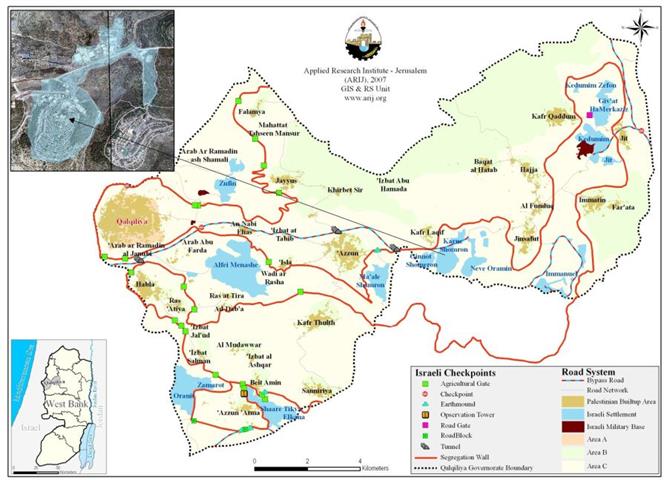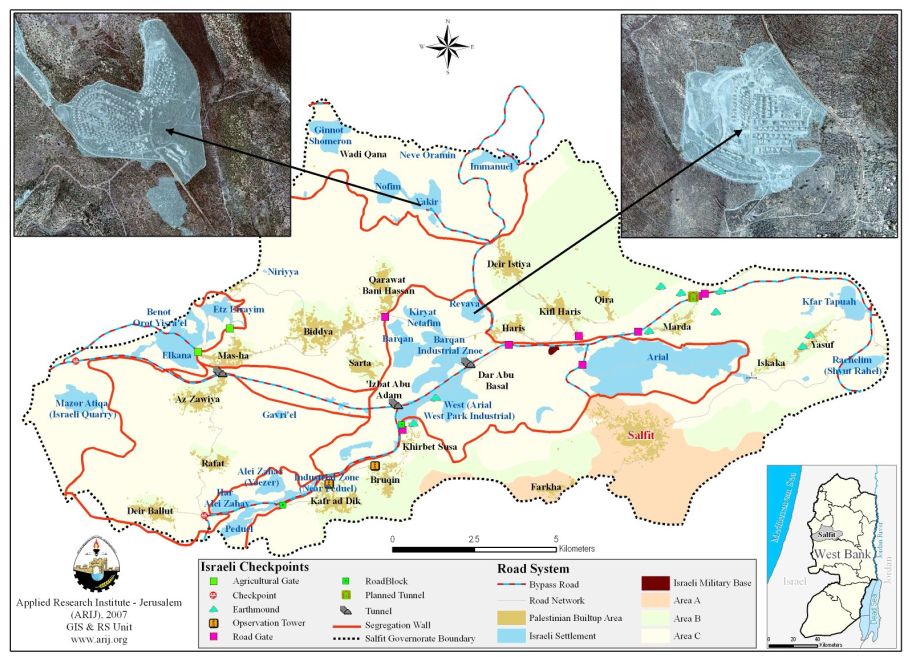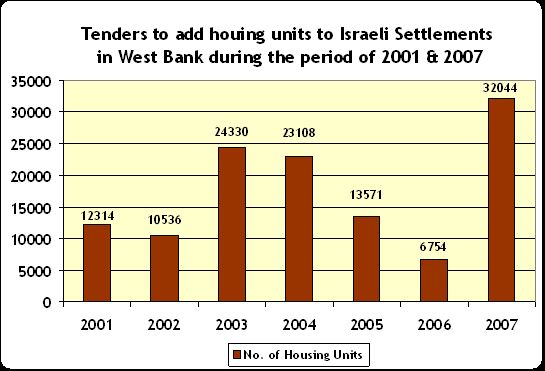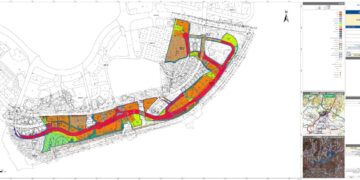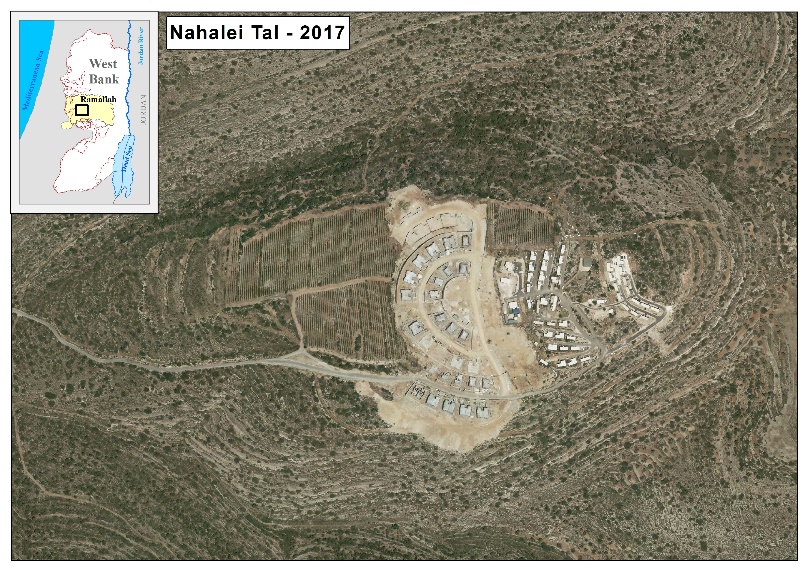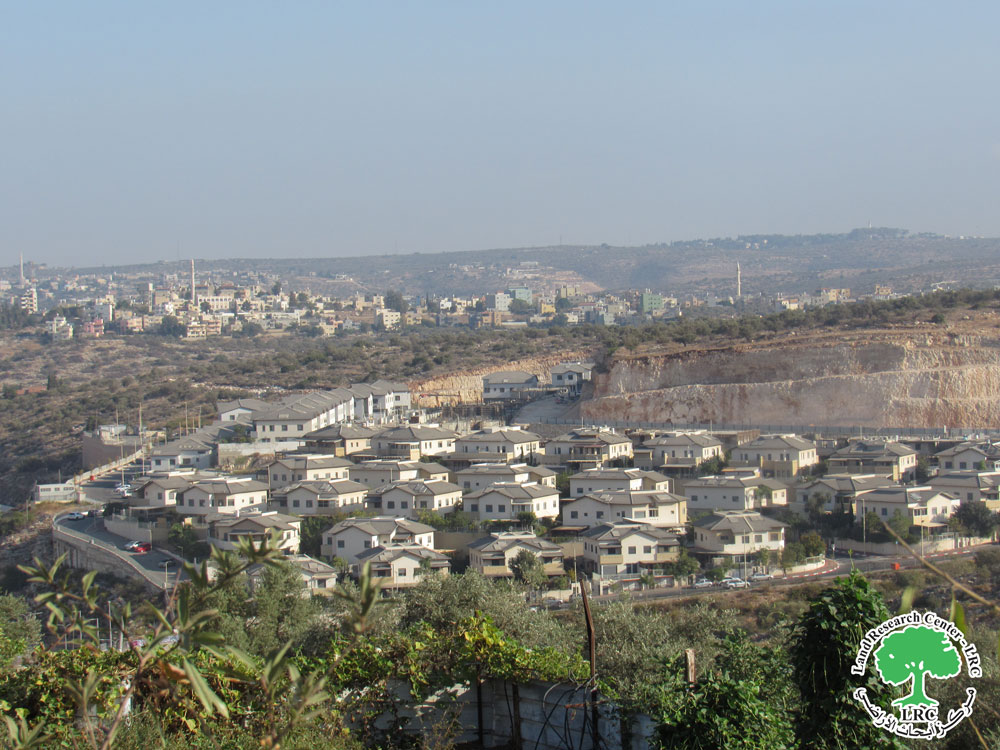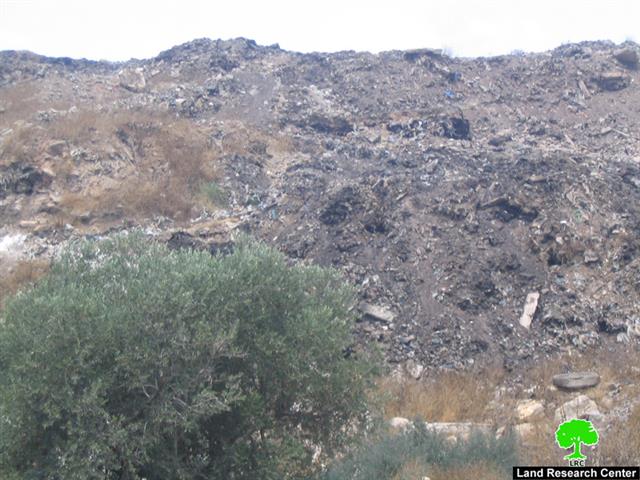Israeli sources revealed the construction in Israeli settlements in the occupied Palestinian territory are to continue under any circumstances. On June 7, 2007, the Israeli Radio announced the construction of 100 new housing units in several Israeli settlements in different areas of the West Bank; The construction included 20 housing units in Karnei Shomron settlement in Qalqilyah Governorate, 30 housing units in Alon Settlement in Jerusalem Governorate and 38 housing units and 12 housing units in revava and Yakir settlements respectively, both located in Salfit Governorate.
Amana, the executive arm of Gush Emunim Settlement movement, are to carry out the construct work. It is a political Israeli movement, established following Israel's occupation of the West Bank and the Gaza Strip in 1967, specifically for such purposes, to help pin the Israeli settlements in the occupied territory. Amana is considered the largest organization which encouraged the construction of Israeli settlements in the West Bank. Table 1 below lists some of the Israeli settlements that were established by Amana movement
|
Settlement Name |
Settlement Location |
Date of Establishment |
|
Kiryat Arba' |
Hebron |
1972 |
|
Elon Moreh |
Nablus |
1979 |
|
Ma'ale Adumim |
Jerusalem |
1975 |
|
Ofra |
Ramallah |
1975 |
|
Kedumim |
Jerusalem |
1979 |
ARIJ Database – 2007
The following is a brief description of each of the settlements that were granted approval for more housing units’ construction
1- Karnei Shomron Settlement – (Kedumim 'Finger' settlements Bloc)
The settlement of Karnei Shomron is located about 12 km away from the 1949 Armistice Line (Green Line) and about 12 km east of Qalqilyah city. It was established in 1978, on lands originally confiscated from the surrounding Palestinian villages, Hajja, Kafr Laqif, Jinsafut and Deir Istiya. Today the settlement occupies a total land area of 1024 dunums and houses 6300 Israeli settlers. See Map 1: location of Karne Shomron Settlement.
Alon Settlement – (Ma'ale Adumim settlements Bloc)
Alon settlement is located about 13 km northeast of Jerusalem city. It was established in 1990, on lands that were confiscated from 'Anata town northeast of the city. Today, the settlement sets on an area of 295 dunums and accommodates more than 520 Israeli settlers. See map 2: location map of Allon Settlement
Yakir settlements (Kedumim 'Finger' settlements' Bloc)
The Israeli Yakir settlement is located about12 km away from the 1949 Armistice line (Green Line) and about 9.5 km northwest of Salfit city. It is established on Palestinian lands confiscated from Deir Istiya village (northwest of the city) in 1981. The settlement occupies an area of 701dunums and houses 1000 Israeli settlers.
Revava Settlement (Ariel 'Finger: settlements' Bloc)
Revava settlement is located about 13 km away from the 1949 Armistice line (Green Line) and about 6 km northwest of Salfit city. It was established on lands confiscated from Deir Istiya and Haris villages (northwest) in 1991. Today, the settlement sets on an area of 399 dunums and accommodates just over 830 Israeli settlers. See Map 3 & 4
Map 3: Location Map of Revava & Yakir settlement
Previous Israeli Tenders and Plans since the beginning of year 2007
As of 2007, several Israeli tenders and plans were issued to either add new housing units to Israeli settlements in the West Bank or to construct new neighborhoods containing huge number of housing units. The following is a detailed description of the Israeli Plans during the aforementioned period
Amid January, 2007, the Israeli Ministry of Construction and Housing released a Tender to construct 1044 new housing units in two settlements in the West Bank, 44 housing units in the settlement of Ma'ale Adumim, located northeast of Jerusalem and 1000 housing units in the settlement of Har Homa, located on the southeastern edge to the city of Jerusalem. The 1,000 new housing units fall within the settlement's master plan.
On February 28, 2007, the Israeli Ministry of Housing and Construction submitted a plan to establish of a new Jewish neighborhood comprising of 11000 housing units in north of Jerusalem in Atarot area. The new neighborhood will be linked with the Illegal Israeli Settlements of Kochav Yacov and Bet-IL (located to the northeast and north of the planned neighborhood) through an under road tunnel located at the northeast.
On May 10, 2007, the Jerusalem's Planning and Construction Committee has approved a plan to build some 20,000 housing units in Giv’at Yael Settlement to be a home for more than 55,000 Israeli settlers. It will also close off the settlements’ line barrier across the northern parts of Bethlehem starting at Har Homa; east of Bethlehem to Giv’at Hamatos and Gilo north of Bethlehem then to Har Gilo, west of Bethlehem where the link is completed with the planned 'Giv'at Yael' settlement. After which the settlement ring continues southward to with 'Gush Etzion settlements bloc in the southwestern part of Bethlehem Governorate.
During the fourth quarter of June 2007, the Israeli 'Regional Council of Tmar' and the “Israel Land Department” revealed a new colonial plan called “Nafeh Zohar “to build 140 new housing units in settlements adjacent to the shores of the Dead Sea. The plan includes the building four models of housing units (cottages and parks), on a land its area ranging from 250-500 square meters, including two to three external cabins for commercial and tourism purposes.
The Israeli settlement expansion program continues …!
In an analysis conducted by the Applied Research Institute – Jerusalem (ARIJ) revealed that during the years of 2001 and 2007, dozens of tenders were issued by different Israeli Ministries, mostly Housing and Construction and Jerusalem Municipality to construct thousands of housing units in many Israeli settlements in the West Bank, as shown in Graph 1 below
The addition of housing units reflects the Israeli Government's direct concession to the Israeli settlement expansionist program, which aims to strengthen the existence of these settlements in the West Bank and to put the Palestinians’ vision to establish a state of their own to an end.
Israel's Settlement Program in International Law
Settlement construction and expansion in light of the United Nations Security Council resolutions, international laws, human rights and international covenants Israel's colonization activities in the Occupied Palestinian Territory (OPT) violates numerous United Nations Security Council and General Assembly Resolutions, primarily:
-
UN Security Council Resolution 242 (1967): UNSCR Resolution 242 calls for 'the withdrawal of all Israeli armed forces from territories occupied' in the 1967 war.
-
UNSC 242 effectively outlaws Israel's 38 year occupation of the West Bank (including East Jerusalem) and the Gaza Strip.
The principles of Resolution 242 are reiterated again in Security Council Resolution 452 (1979) which calls upon 'the Government and people of Israel to cease, on an urgent basis, the establishment, construction and planning of settlements in the Arab territories occupied since 1967, including Jerusalem,' the Security Council Resolution 446 (1979) which '[d]etermines that the policy and practices of Israel in establishing settlements in the Palestinian and other Arab territories occupied since 1967 have no legal validity and constitute a serious obstruction to achieving a comprehensive, just and lasting peace in the Middle East' and a further time in Security Council Resolution 465 (1980).
Israel's settlement policy stands as an explicit violation of the Fourth Geneva Convention and is widely condoned by the international community. In addition to violating almost all the articles within the international law among other; as to destruction of civilian property, Israel's program of populating the settlements with Jewish citizens violates Article 49 of the Geneva Convention, which states that 'the occupying power shall not deport or transfer parts of its own population into the territories it occupies.'
Prepared by
The Applied Research Institute – Jerusalem
ARIJ


